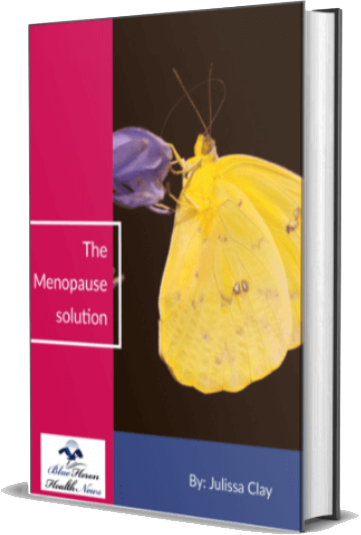
What is perimenopause?
Perimenopause is the transitional period leading up to menopause, during which a woman’s body undergoes hormonal changes that eventually result in the end of menstrual cycles and reproductive capability. It typically begins several years before menopause and is characterized by fluctuations in hormone levels, particularly estrogen and progesterone, leading to various physical and emotional symptoms. Here’s an overview of perimenopause:
1. Timing and Duration
- Age of Onset: Perimenopause usually begins in a woman’s 40s, but it can start as early as the mid-30s or as late as the early 50s. The average duration of perimenopause is about 4 to 8 years, but it can vary widely among individuals.
- Transition to Menopause: Perimenopause ends with the onset of menopause, which is defined as 12 consecutive months without a menstrual period. The average age of menopause is around 51 years.
2. Hormonal Changes
- Estrogen Fluctuations: During perimenopause, estrogen levels become irregular. Instead of the predictable rise and fall seen in the menstrual cycle, estrogen levels may spike or drop unpredictably. These fluctuations contribute to many of the symptoms experienced during this time.
- Progesterone Decline: Progesterone levels also decline, particularly in the later stages of perimenopause, which can lead to irregular menstrual cycles and changes in menstrual flow.
- FSH and LH Levels: As the ovaries gradually produce less estrogen, the pituitary gland increases the production of follicle-stimulating hormone (FSH) and luteinizing hormone (LH) in an attempt to stimulate the ovaries. This hormonal shift further contributes to the symptoms of perimenopause.
3. Symptoms of Perimenopause
- Irregular Periods: One of the earliest and most common signs of perimenopause is changes in menstrual cycles. Periods may become shorter, longer, heavier, lighter, or more irregular.
- Hot Flashes and Night Sweats: These are among the most common symptoms and result from the body’s response to fluctuating estrogen levels. Hot flashes are sudden feelings of warmth, often accompanied by sweating and a red, flushed face.
- Sleep Disturbances: Many women experience insomnia or frequent waking during the night, often due to night sweats or hormonal changes.
- Mood Changes: Hormonal fluctuations during perimenopause can lead to mood swings, irritability, anxiety, and even depression.
- Vaginal Dryness and Discomfort: Decreased estrogen levels can cause thinning of the vaginal tissues, leading to dryness, itching, and discomfort during intercourse.
- Decreased Libido: Changes in hormone levels can lead to a decrease in sexual desire and arousal.
- Cognitive Changes: Some women experience memory lapses, difficulty concentrating, or “brain fog” during perimenopause.
- Physical Changes: Weight gain, particularly around the abdomen, and changes in skin texture or hair can also occur during perimenopause.
- Breast Tenderness: Hormonal fluctuations may cause breast tenderness or pain.
4. Impact on Health
- Bone Health: The decrease in estrogen levels during perimenopause can lead to a reduction in bone density, increasing the risk of osteoporosis over time.
- Cardiovascular Health: Changes in hormone levels can also impact cholesterol levels and increase the risk of cardiovascular disease.
5. Management and Treatment
- Lifestyle Changes: Regular exercise, a balanced diet, and stress management techniques can help alleviate some symptoms of perimenopause.
- Hormone Therapy: Hormone replacement therapy (HRT) or low-dose birth control pills may be prescribed to help regulate periods, reduce hot flashes, and manage other symptoms. However, HRT is not suitable for everyone and should be discussed with a healthcare provider.
- Non-Hormonal Treatments: For women who cannot or do not wish to use hormone therapy, other treatments such as antidepressants, anti-seizure medications, or certain blood pressure drugs may help manage symptoms like hot flashes and mood swings.
- Vaginal Estrogen: For vaginal dryness and discomfort, local estrogen treatments such as creams, rings, or tablets may be recommended.
- Calcium and Vitamin D: Supplements may be advised to support bone health, particularly if there is a risk of osteoporosis.
6. Importance of Healthcare Guidance
- Regular Check-Ups: It’s important for women in perimenopause to have regular check-ups with their healthcare provider to monitor symptoms, manage any complications, and discuss treatment options.
- Screening Tests: Routine screenings, such as mammograms, bone density tests, and cardiovascular risk assessments, are important during perimenopause to catch potential health issues early.
7. Transition to Menopause
- Final Stage: Perimenopause transitions into menopause once a woman has gone 12 consecutive months without a menstrual period. At this point, the ovaries produce very little estrogen, and the symptoms of perimenopause may begin to stabilize, although some may persist into postmenopause.
In summary, perimenopause is the transitional phase before menopause characterized by hormonal fluctuations that cause a variety of physical and emotional symptoms. Understanding and managing these symptoms with the help of healthcare providers can help women navigate this phase more comfortably.

The Menopause Solution™ By Julissa Clay – Blue Heron Health News The Menopause Solution it can be concluded easily that you should try this program at least once if menopause is destroying your internal organs or deteriorating your physical health to a considerable level. This program can help in resolving your health issues caused by perimenopause and menopause in a completely natural manner. You can use this program without any risk as you can get your money back if you are not satisfied with its results.